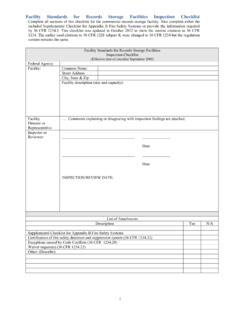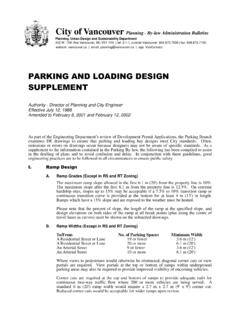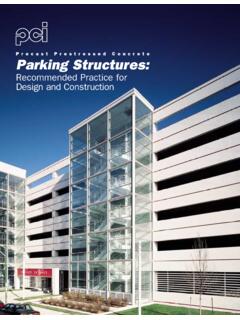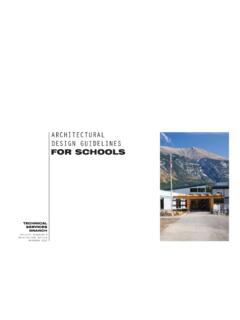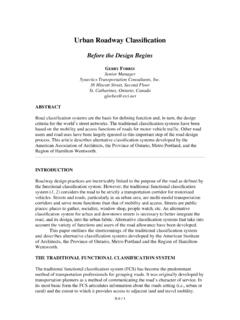Transcription of Recommended Lighting Levels for Exterior Lighting
1 1 of 207/98 International Dark-Sky Association -- Information Sheet 77 Recommended Lighting Levels for Exterior LightingThe Illuminating Engineering Society of North America (IESNA, or IES) gives in current IES publications quite anumber of Recommended illumination Levels for outdoor Lighting . We summarize some of these recommendationsbelow, and in some cases the original tables have been simplified. Some of these illumination Levels are currentlyunder discussion by IES technical committees. It is important to note that these values are recommendations, notstandards. Standards are set at the federal, state, county, or community level. The IES does not set standards, thoughIES recommendations are often used by those who set fact, Recommended illuminance Levels are to some degree arbitrary. On p. 93 of the 1993 edition of the IESNA Lighting Handbook, it states thatIt remains to be determined whether the added accuracy in predicting visual performance will be utilized in theilluminance selection procedure.
2 A model of visual performance, no matter how accurate, is only part ofilluminance selection. The cost of equipment and energy will always be an important part of the Society'sdecision. If electric energy prices were to double, Recommended illuminance Levels would certainly becomelower. Further, there are other, perhaps more important, Lighting design factors that the practicing illuminatingengineer must consider in setting illuminance all outdoor Lighting applications, many factors come into play and should be considered: minimizing glare, mountingheight and spacing, Lighting system depreciation and life-cycle cost, conflict areas (such as between vehicles orbetween vehicles and pedestrians), access control and vandalism prevention, as well as the mix of commercial,industrial, and residential properties near the area to be illuminated. For example, in the presence of glare, one needsmore illumination to try to overcome the adverse impact of the glare; without glare, lower illumination Levels arepossible, with an actual improvement in visibility.
3 The key is that all outdoor Lighting should be carefully done, withconsideration given to all the relevant give below a summary of the Lighting illuminance Levels in footcandles, as that is the most common unit used in theUnited States. However, lux is the preferred international unit, and the IES does officially recommend its use in theUnited States. A level of ten lux is about one footcandle ( lx = 1 fc, exactly).Roadway Lighting Average Maintained Uniformity Illuminance (fc) (Avg/Min) Freeway Class A - 3/1 Freeway Class B - 3/1 Expressway - 3/1 Major road - 3/1 Collector road - 4/1 Local road - 6/1 parking Lots Level of Activity.
4 Horizontal Illuminance Uniformity (Footcandles) Ratio Avg Min High 4/1 Major League Athletic Events Major Cultural or Civic Events Regional Shopping CentersFast Food FacilitiesMedium Community Shopping Centers 4/12 of 2 Cultural, Civic, or Recreational EventsOffice parking Airports, Commuter Lots, etc. Residential Complex parking Hospital ParkingLow 4/1 Neighborhood Shopping Industrial Employee ParkingEducational Facilities ChurchesIES also states that the "Low" values are appropriate wherever there is a requirement to maintain security at any time inareas where there is a low level of nighttime for other outdoor Lighting Levels (footcandles)Building exteriors Entrances Active (pedestrian and/or conveyance) 5 Inactive (normally locked, infrequently used)
5 1 Vital locations or structures 5 Building surrounds 1 Floodlit Buildings and Monuments Dark surroundings Bright surroundings Light surfaces 5 15 Medium light surfaces 10 20 Medium dark surfaces 15 30 Dark surfaces 20 50 loading and Unloading Platforms 20 Service Stations Approach 3 Driveway 5 Pump Island 20 30 Service Areas 3 7 Storage Yards Active 20 Inactive 1 Retail Outdoor Lighting Illumination Level of Surrounding Area High Medium LowSeasonal circulation 10 7 5 Marketing area 30 20 10 Feature display 60 40 20 Auto Lots circulation 10 7 5 Merchandise 50 30 20 Feature display 75 50 35 IES states that the illuminance in Exterior retail selling areas should not exceed 10 times that of the surrounding should be referenced from the roadway.
6 IDA Inc., 3225 N. First Ave., Tucson, AZ 85719-2103 USA Telephone: 1-520-293-3198 Fax: 520-293-3192 E-mail: Web.

